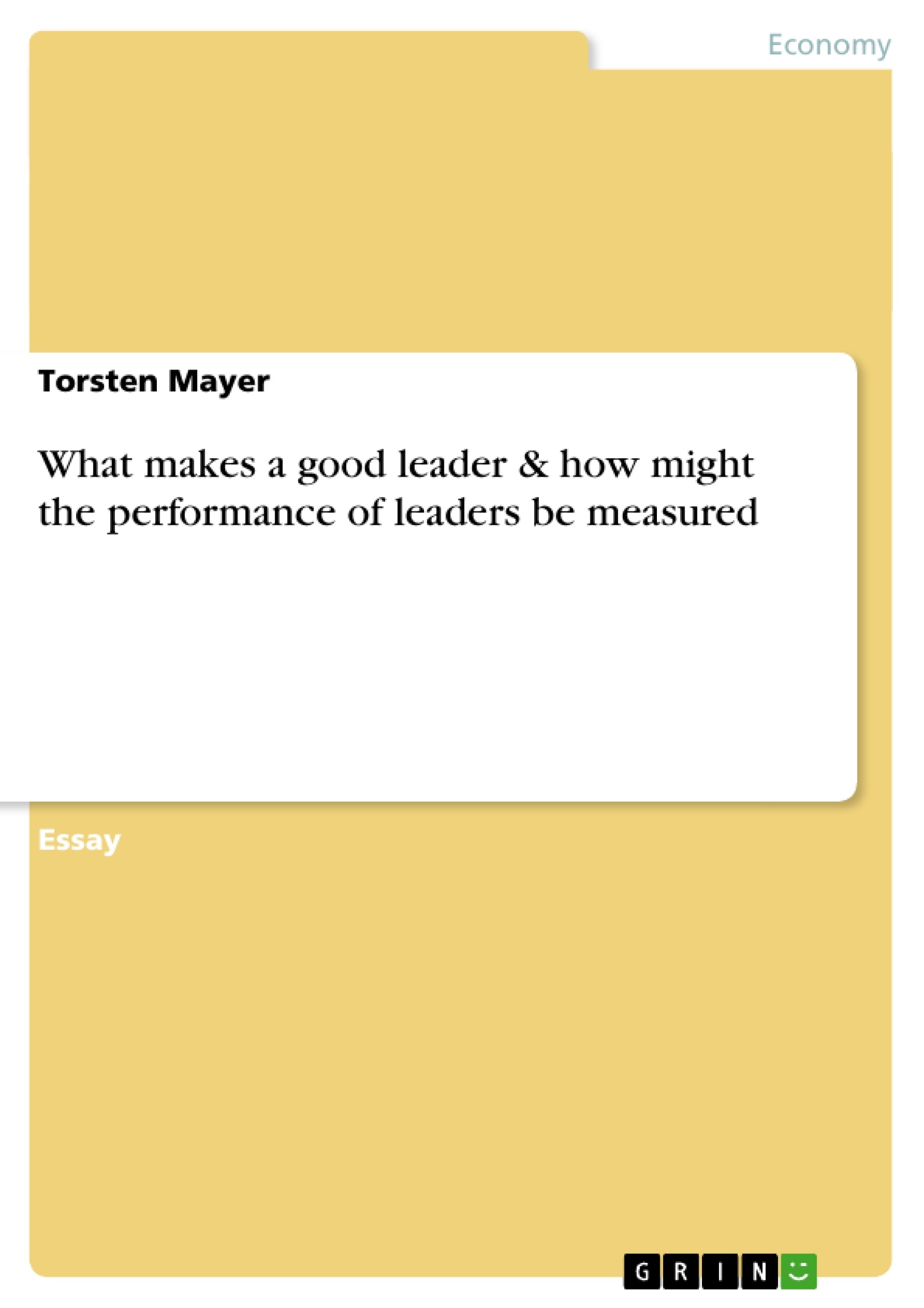Probably everybody will agree that a good leader is very important to any successful business. But what makes an effective leader and how can someone develop her or his leadership qualities? Indeed there are many factors that affect the leadership qualities. And one thing is sure, anyone can be a good leader, even if he or she isn’t yet. Discover in the next paragraphs “my” major elements that affect the leadership quality.
Inhaltsverzeichnis (Table of Contents)
- What makes a good leader
- Communication
- The communication process
- Removing barriers
- Motivation
- Challenges
- Herzberg's motivation and hygiene factors
- Finding the right leadership style
- Autocratic leadership
- Democratic leadership or participative leadership
- Laissez-faire leadership
- Transformational leadership
- The leadership continuum
- Contingency theories or situational leadership
- Improving the leadership qualities
- How might the performance of leaders be measured
- Performance appraisal program
- Performance plan
- Progress review
- Performance appraisal
- The balanced scorecard
Zielsetzung und Themenschwerpunkte (Objectives and Key Themes)
This text aims to explore the characteristics of effective leadership and provide guidance on how to measure and enhance leadership performance. It delves into the factors contributing to good leadership, including communication, motivation, and the identification of appropriate leadership styles. The text also presents methods for evaluating leader effectiveness, focusing on performance appraisal programs and the balanced scorecard.
- Communication as a crucial element of effective leadership
- Motivation and its impact on employee performance
- Identifying and applying appropriate leadership styles
- The importance of clear and effective communication processes
- Methods for measuring and evaluating leadership performance
Zusammenfassung der Kapitel (Chapter Summaries)
The first chapter delves into the essential qualities of a good leader, emphasizing the importance of effective communication. It discusses the communication process, identifying potential barriers and outlining strategies for their removal. The chapter further explores motivation as a key factor in leadership, examining the impact of different motivational approaches and exploring Herzberg's theory of motivation and hygiene factors.
The second chapter focuses on evaluating leadership performance through the lens of performance appraisal programs. It outlines the key elements of performance appraisal, including performance planning, progress reviews, and the overall appraisal process. Additionally, the chapter introduces the balanced scorecard as a comprehensive method for assessing leadership effectiveness.
Schlüsselwörter (Keywords)
The core concepts of this text revolve around leadership, communication, motivation, performance appraisal, and the balanced scorecard. The exploration of different leadership styles, including autocratic, democratic, laissez-faire, and transformational leadership, are integral to the discussion. The text also highlights the importance of effective communication strategies and the role of motivation in fostering employee engagement and performance.
- Citar trabajo
- Torsten Mayer (Autor), 2007, What makes a good leader & how might the performance of leaders be measured, Múnich, GRIN Verlag, https://www.grin.com/document/86906



